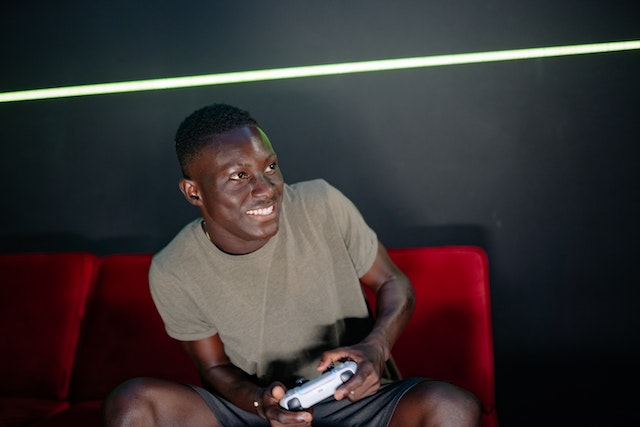HDR for gaming has been around for a while now, and like other novelty displays, such as 3D, it hasn’t quite taken off either. But that doesn’t mean you should ignore it, nor should you feel it is necessary. You see, not all games support HDR, so unless you play AAA titles and watch a lot of movies, an HDR display could be money down the drain. Additionally, there are some excellent displays out there that have settings such as HDR Effect and Vivid that mimic it well.
It Isn’t Always Necessary
HDR displays can offer a genuinely satisfying image optimization that makes some content stand out. You can get richer colors against deep blacks for a superior contrast. But depending on your display’s settings, you can get a decent HDR effect by playing with the vibrance settings and the luminance. This means it isn’t always necessary, and even the best 240hz gaming monitor doesn’t offer HDR, nor is it even 4K, because some displays look just as good anyway.
Not All Games Support HDR
One of the pitfalls of HDR that some people don’t realize is that not all content is offered in the format. A piece of content like a game or movie has to be optimized for HDR, and this is down to the developers. Pretty much all huge AAA releases, such as the upcoming Marvel’s Spider-Man 2, Hogwarts Legacy, and Starfield, offer HDR settings. But if you enjoy AA or indie games, you could be wasting your money by going for HDR displays that are more expensive.
HDR for Gaming Can be an Afterthought
Most major releases do offer HDR, and it’s excellent when it’s done right. But there are some cases where the HDR of a game has been added last-minute as an afterthought rather than as a ground-up setting for a game, and not all of them look as stunning as Horizon: Forbidden West. A great example of HDR as an afterthought is the seminal Red Dead Redemption 2. RDR2’s HDR setting makes the game almost unplayable and hasn’t been optimized at all.
Every Game has Different Settings
If you don’t like messing around with settings, then HDR isn’t for you. While HDR offers superb visual quality when done correctly, it can take some time to get there. This is mainly because every HDR display is different, so the developers can’t just solidify one setting for the game. So you need to calibrate HDR for each game and, indeed, each console or your PC. And this can be tricky to get right, as one tiny change to the settings can make it look washed out or too dark.
You Can Get Better Visuals without Upgrading
The visuals of HDR are stunning when implemented correctly. And this means you can get superb quality in a game without having to upgrade to a fancier graphics card. The visual improvement when you use HDR and when it is done well can breathe new life into your gaming sessions. Games like God of War, The Last of Us, and Horizon: Zero Dawn are truly mind-blowing in all their HDR glory, especially combined with a decent-sized 4K display.
It Can Look Absolutely Stunning
When you get to grips with the settings of HDR and what works well for your specific display, you can get insane visual quality from some games. The colors just pop, and watching a sunset in a game like Horizon: Forbidden West just looks incredible. Here are some tips to set HDR:
- Choose a monitor or display that offers at least 400 nits but preferably 600.
- Make sure your graphics card (for PC) is capable of outputting HDR for gaming.
- Make sure to use a DisplayPort 1.4 or HDMI 2.0 cable for an HDR display.
- Calibrate the HDR settings according to each device and content medium.
- Make sure HDR is actually switched on, as sometimes it is off by default.
- Block the light from a room when calibrating your HDR display to see it better.
- Set the luminance to just below the point where whites no longer get brighter.
Setting up your HDR can be a bit of a challenge, but it is well worth the time and effort. Yet you need to be aware that you might need to set HDR settings for each individual device and game. And ensure you are using HDR-compatible cables, or the HDR feature of it simply won’t work.
Not All HDR Displays are Made Equal
Like most things, you can get what you pay for when it comes to HDR. The content developers have a role to play when it comes to the HDR content of a game. But the quality also relies on the display you choose. Even major brands like LG and Samsung have put out some poor-quality HDR displays to capitalize on consumer demand. But the quality of an HDR display relies mostly on its peak luminance setting, set by nits. A low luminance means poor HDR.
HDR Can Also Look Terrible
There are some cases where HDR just doesn’t look good. It shines best with current-generation games and newer movies. But for older titles, it can be a bit lackluster, especially when it appears to have been forced onto a game that was never really meant to have it. RDR2, as mentioned, is a perfect example. And when HDR looks bad, it can really remove the joy from a game and disappoint because here you are with an expensive HDR setup and a bad image.
You Don’t Need HDR for Gaming Enjoyment
HDR is excellent for gaming when it is done well. Games like Star Wars Jedi: Fallen Order and Gran Turismo7 look unbelievable with HDR. And while visual quality has become an important factor in modern gaming, it is ultimately the game itself that should determine how much you enjoy it. It is nice to have your new game support HDR, but it’s not the end of the world if it doesn’t. HDR is best thought of as a nice option but not a reason for buying (or not) a game.
Some Displays Mimic HDR Very Well
There are some displays out there that come with tons of settings, and some, such as LG monitors and TVs, even have an “HDR Effect” setting. With settings like this and some playing around, you can mimic an HDR look pretty well. Most TVs also come with a “Vivid” setting these days too. Many people don’t like the Vivid setting, but it can help your games look more HDR than using standard TV settings. This also ensures you don’t get the washed-out HDR look.
It’s a Personal Preference
Like most products and features, HDR is a personal preference. Because of messing around alone, some people prefer to just leave it. And if you get the settings wrong, you will make your image quality worse. Then there are people who just don’t care, and the visual quality of a display means nothing to them. Finally, HDR displays are also much more expensive than standard ones, so in times of rising bills and cost of living, it might be best to give HDR a miss.
Summary
It isn’t always necessary to buy a display with HDR for gaming. In any case, not all games support HDR anyway. Of course, the visuals can look superior and stunning when you get the settings right, but this can take quite a lot of messing around and must be done for each device.


